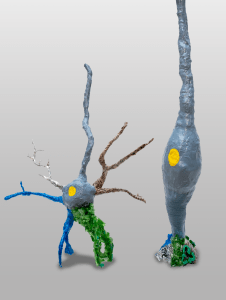
The gene SYNGAP1, the variants of which are top risk factors for autism spectrum disorder (ASD), has previously unappreciated effects on the developing brain, according to a new study published in Nature Neuroscience. The study shows how disease-causing variants of SYNGAP1, thought primarily to affect synapses between mature neurons, could disrupt early development in a key region of the brain known as the cortex.
“Our findings reframe our understanding of the developmental role not only of SYNGAP1, but also of an entire category of ASD risk genes previously thought to be primarily involved in the function of synapses, which are the interfaces that allow nerve cells to communicate with each other,” said corresponding author Giorgia Quadrato, an assistant professor of stem cell biology and regenerative medicine at the Keck School of Medicine of USC. “Ultimately, this points to the importance of pursuing ASD therapies that target not only synapse function, but also early developmental defects.”
To read more, visit https://stemcell.keck.usc.edu/autism-linked-gene-syngap1-could-impact-early-stages-of-human-brain-development.